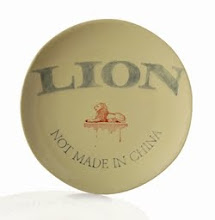Meet Chief Inspectors Engel & Boef – not your average sleuths. At the helm of the Heritage Protection Unit, initiated last year by artist Alheit Ströh, they face the daunting task of preventing the extinction of our cultural heritage. However, in their preliminary investigation it has become apparent that their roles cannot be limited only to probing and uncovering the extent to which our society has been infiltrated by alien identities. According to Ströh, they also have to act as guardians of our cultural heritage given the scale at which we ignorantly succumb to and accept these invasions.
London’s cultural lumbar punch left Ströh somewhat disoriented on his return to South Africa recently after three years and, in his attempts to immerse himself back into society, he became a tourist in his own country. From functional to ornamental, what he found on the creative scene left him with a growing sense of disconnectedness as almost every object he picked up had first been in Chinese hands. This set him on an almost obsessive quest for products made on local soil, not in some other country – hence the title of his works on show.
A formally trained landscape architect, Ströh’s design addiction over the years has driven him to experiment with different media - as is evident in these works, which combine his current trade as a goldsmith with a longstanding love affair with ceramics. What better way, then, to tackle the proverbial bull in the china shop by its horns than by employing ceramic as medium to highlight the fragility of the bigger issue: protecting our heritage?
Not Made In China not only refers to the commodity but with subtly changing contours, implicates and explores our country’s particular heritage which, of all exotic influences over centuries (Dutch, British, German etc), may well include references to China. Therefore, far from discriminating against Chinese-made goods as such, Ströh’s “special agents” Engel & Boeff are more concerned with the localisation of products – from conceptual development and design to manufacture, which naturally extends to fair trade – before they will apply their stamp of approval.
Urban Muti Pot as object and title (referring to a traditional southern African item with healing properties) is an example of how Ströh explores his heritage by combining the endemic with the classical European (the Royal Crown, also evoking special powers), while reflecting our modern industrial experience with the use of recycled plastic moulds.
by Riana van der Schyff
Friday, March 5, 2010
Subscribe to:
Posts (Atom)








